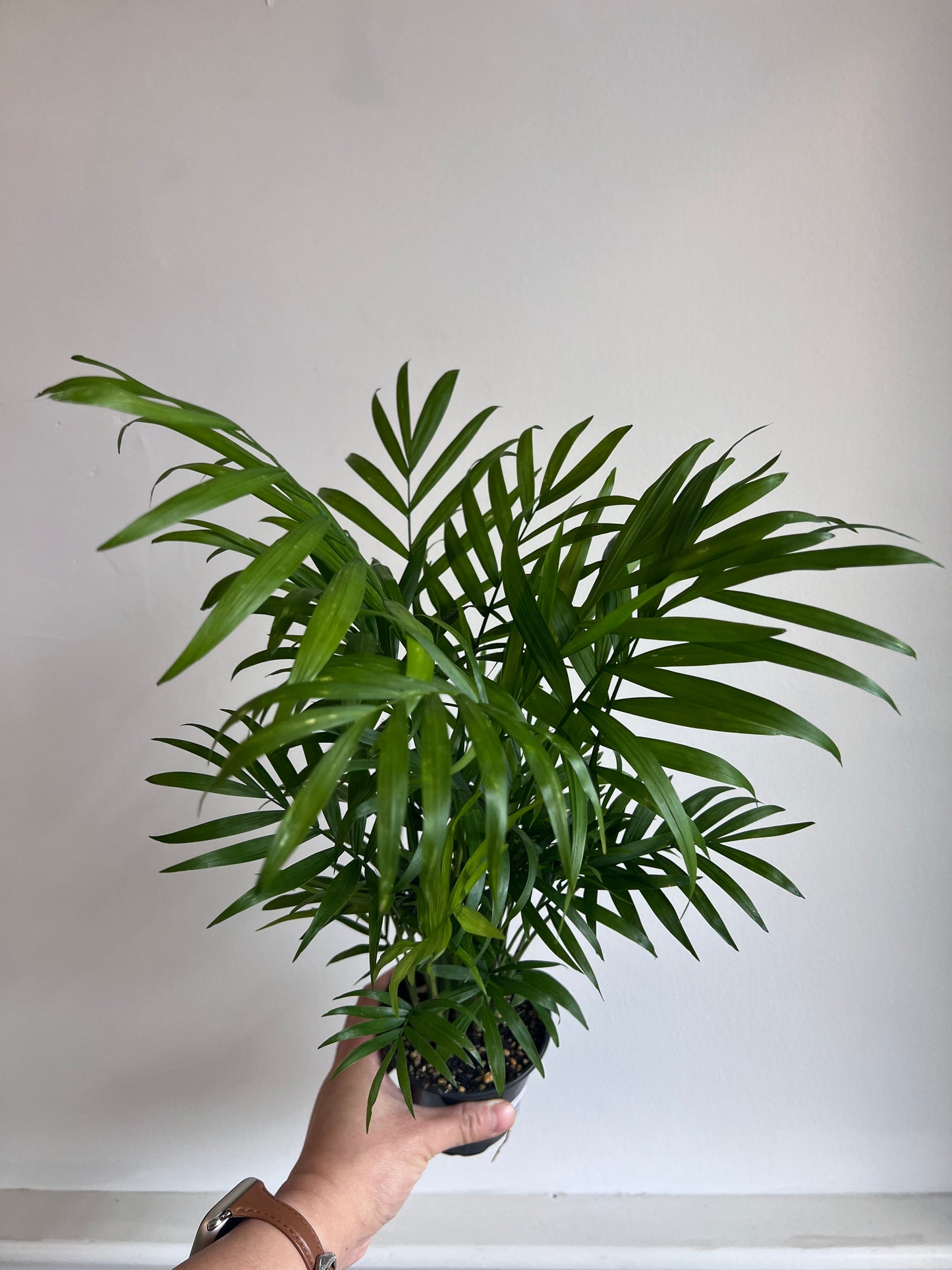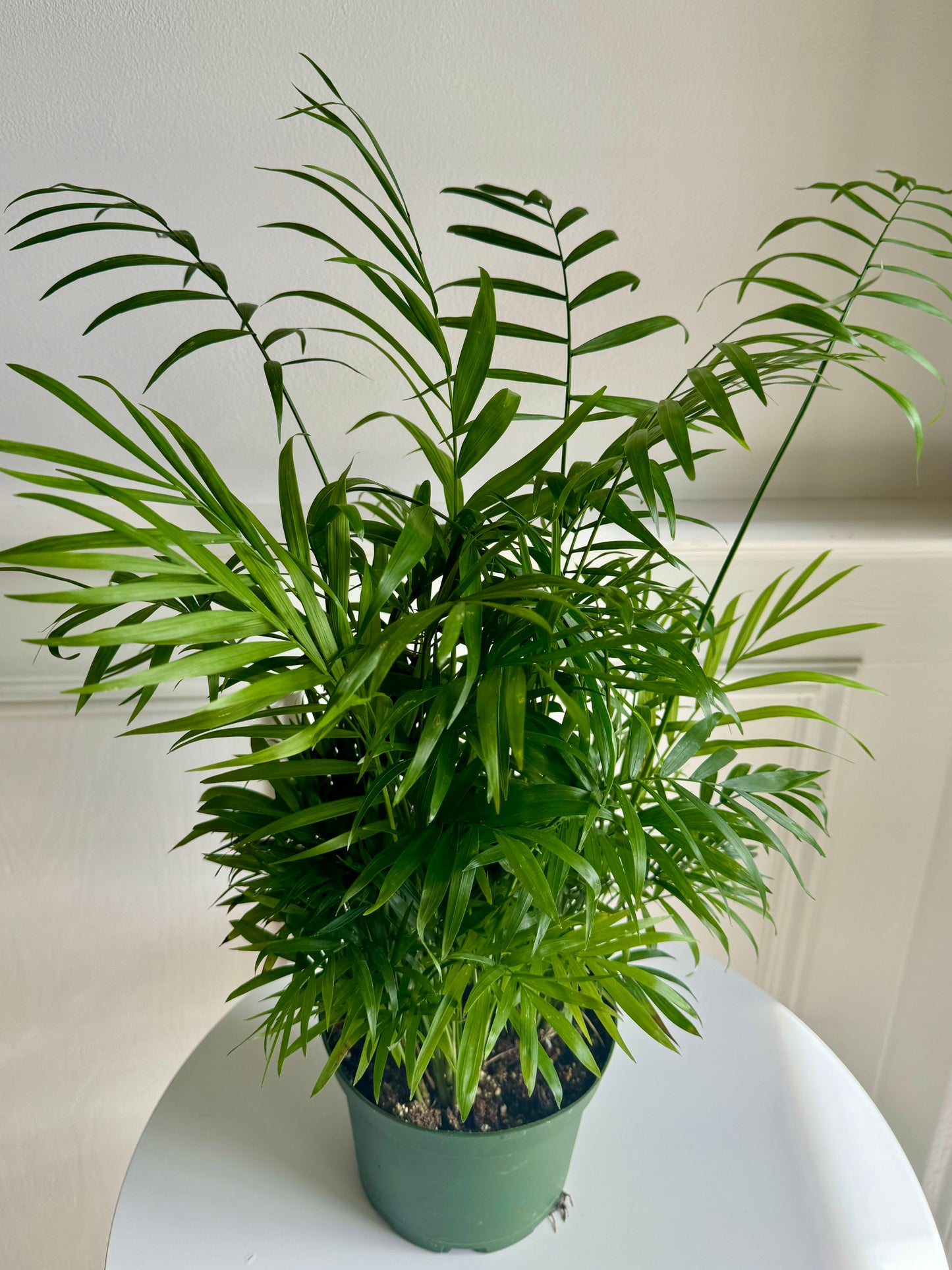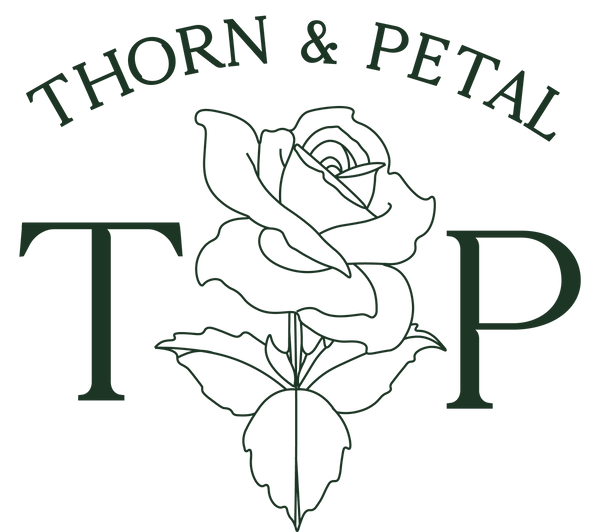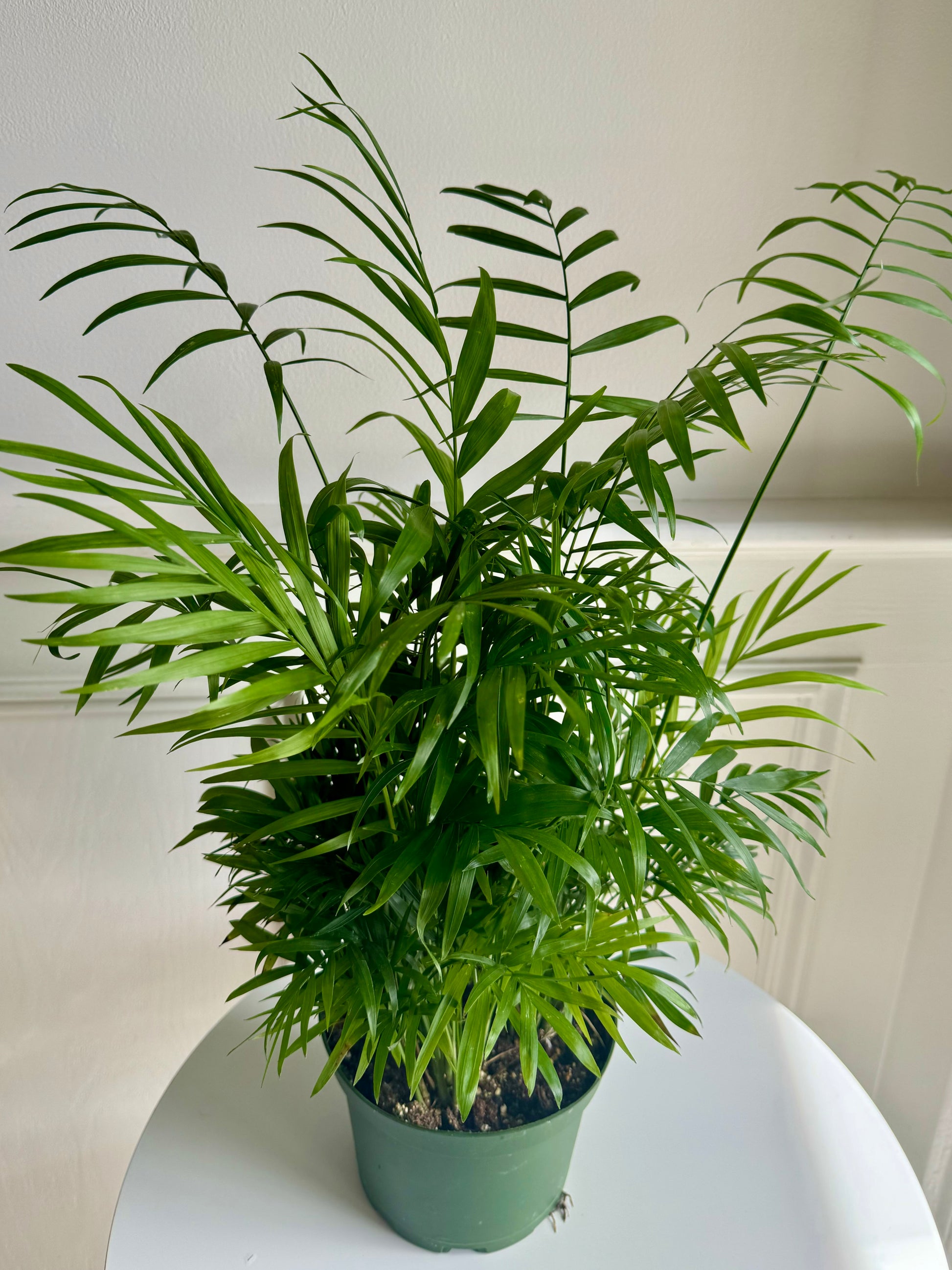Parlour Palm
Parlour Palm
Couldn't load pickup availability
Parlor Palms, also known as Neanthe bella palms or Chamaedorea elegans, are popular indoor palm plants appreciated for their graceful, feathery fronds and ease of care. Here's some information about Parlor Palms:
Appearance: Parlor Palms are characterized by their slender, cane-like stems and delicate, pinnate (feather-like) fronds. The fronds consist of numerous narrow leaflets arranged along a central rib, giving them a lush and tropical appearance. The foliage is typically dark green, although some varieties may have lighter or variegated leaves.
Growth Habit: Parlor Palms have a slow to moderate growth rate and typically reach heights of 2 to 6 feet indoors, although they can grow taller under optimal conditions. They have a clumping growth habit, with multiple stems emerging from the base, creating a full and bushy appearance. Parlor Palms are well-suited for containers and can be grown indoors as houseplants or outdoors in mild climates.
Native Habitat: Parlor Palms are native to the rainforests of southern Mexico and Guatemala, where they grow as understory plants in shaded, humid environments. They are adapted to low light levels and are commonly found growing under the canopy of taller trees.
Care Requirements: Parlor Palms are relatively low-maintenance plants that are easy to care for, making them suitable for beginner gardeners and indoor plant enthusiasts. They prefer bright, indirect light but can tolerate lower light conditions. Avoid direct sunlight, as it can scorch the leaves. Parlor Palms prefer well-draining soil and should be watered when the top inch or so of soil feels dry. They thrive in average room temperatures and appreciate slightly higher humidity levels, which can be achieved through regular misting or using a humidifier.
Fertilization: Parlor Palms benefit from regular fertilization during the growing season with a balanced, water-soluble fertilizer diluted to half strength. Fertilize once a month during the spring and summer months, reducing frequency during the fall and winter.
Propagation: Parlor Palms can be propagated through division or by collecting and germinating seeds. To propagate by division, carefully separate the offsets or side shoots from the parent plant and replant them in separate containers with well-draining soil. Seeds can be collected from mature fruit and sown in a seed-starting mix.
Pet-Friendly: Parlor Palms are considered non-toxic to cats, dogs, and other pets, making them safe to have around animals compared to some other houseplants.
Overall, Parlor Palms are elegant and easy-to-care-for plants that add a touch of tropical flair to indoor spaces. With their graceful fronds and adaptability to indoor conditions, they are a popular choice for bringing a bit of greenery into homes, offices, and other interior environments.
Share




